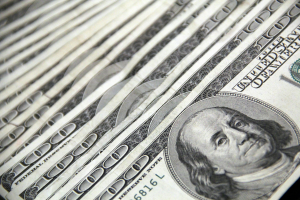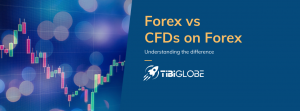Last week saw Wall Street on its toes amid a sudden shift in Trump’s tariff policy. On Wednesday, April 9, the US President decided to delay the application of the now-proverbial reciprocal tariffs by 90 days against most countries, except China, which faces 145% tariffs on most US-imported goods.
In a matter of days, the US dollar lost its safe-haven status, boosting Treasuries to fresh highs. The 10-year US Treasury climbed 9 basis points, advancing to 4.486% on Friday. The move marks a sudden change in how investors perceive Treasuries.
Traditionally, investors turn to bonds and other safe-haven assets like precious metals in times of turbulence. Could tariffs be heralding a new financial crisis? Let’s take a closer look!
Particularly sensitive to any sudden gear switch, such as Trump’s sudden 90-day pause on tariffs, USD-based Forex pairs have benefited from the respite. EURUSD was one of them.
Trading near 1.1300, the pair benefited from upside momentum on Friday as global equity markets enjoyed the respite.
GBPUSD also benefited, rallying past the 1.3000 psychological level as China retaliated against the US by imposing 125% tariffs on US goods.
USDJPY skidded to 142.00 amid plummeting interest in the US dollar. USD liquidations contributed to the Japanese Yen’s appreciation on Friday.
Equity markets react
Global equity markets were not late to react. The Dow Jones Industrial Average (DJIA) went up almost 600 points on Friday, gaining 1,800 points over the past week. The benchmark index traded still way below its record highs. Whether the upside will continue through the new trading week remains to be seen.
Global benchmarks reacted differently to the 90-day tariff reprieve. Japan’s Nikkei 225, for example, tumbled 2.96% to close the past trading week at 33,585. Further volatility in the index is to be expected as fears for a long-term US-China trade war rise.
Currently, Japan faces a 10% baseline tariff rate and is preparing for negotiations with the White House, hoping to reach a favourable trade ‘deal’. Industry heavyweights led the decline. Among them, Mitsubishi UFJ lost nearly 3.9%, followed by Toyota Motors with 4.8% and Sony Group, which recorded 7.4% in losses.
European stock markets rallied to historic highs amid temporary trade peace with the US as both titans paused the implementation of reciprocal tariffs. The Euro Stoxx 50, tracking blue-chip companies across the eurozone, soared 8.2%, gaining nearly 5,000 points in its strongest upsurge since March 2020.
The Euro Stoxx 600 also climbed 7.4%, while national indices saw similar growth. Germany’s DAX 30 was up 8.5%, while France’s CAC 40 and Spain’s IBEX rallied 8.6% and 8.3%, benefiting from rising investor optimism. By the end of the trading day, however, all of these major indices shed some gains yet remained in positive territory.
The European equity market rally was led by top performers, including Euro Stoxx 50-listed Deutsche Bank, whose shares rose 13.09%, tech giants like Siemens, which gained 12.15%, and Phillips, which added 11.95%.
Other top winners included DAX 30-listed Infineon, which posted 15.20% gains, followed by Heidelberg Cement with a 14.46% price rise. Among the CAC 40 top performers, ArcelorMittal added as much as 13.56% on the news, followed by Airbus with a 10.95% gain and Schneider Electric with 10.26%.
Bankiter, which saw a 14.48% upsurge in share price, Banco Sabadell and Banco Santader, both of which climbed 11.88% and 11.26%, were some of the market leaders driving the IBEX index higher.
Against this backdrop, one question hovers in the air: ‘Is now a good time to buy in any of these benchmarks?’ While the upward momentum remains clear near term, high volatility is also to be expected as geopolitical uncertainty prevails. So, trade with caution and keep up to date with the latest news.
Risk Disclaimer:
CFDs are complex instruments and come with a high risk of losing money rapidly due to leverage. You should consider whether you understand how CFDs work and whether you can afford to take the high risk of losing your money. Prices can fluctuate rapidly, and past performance is not indicative of future results. Please refer to the full risk disclaimer on our website.
The information provided does not constitute financial advice and should not be relied upon as such. You should seek independent advice before making any investment decision.








